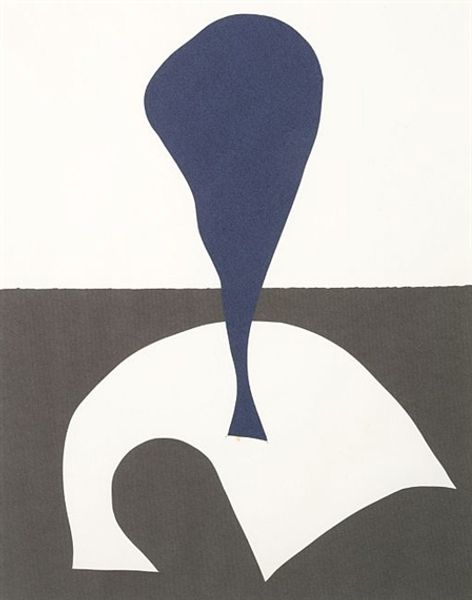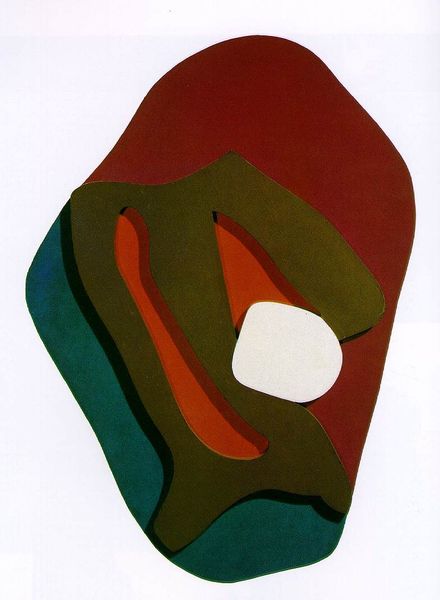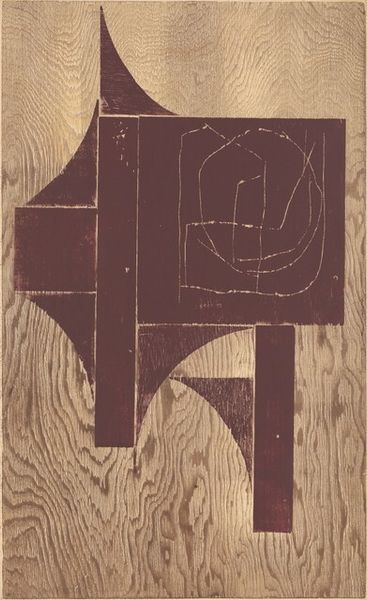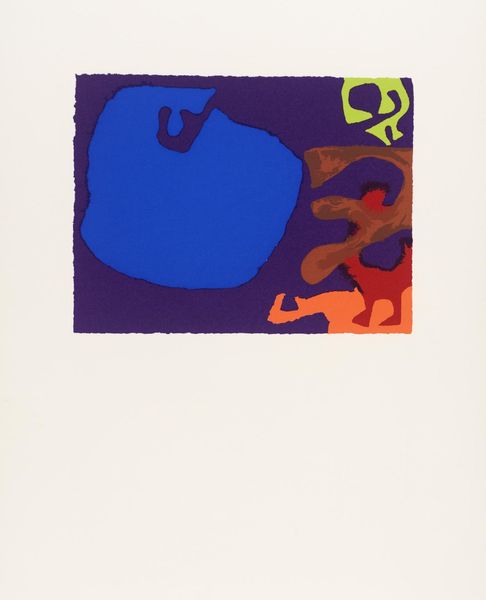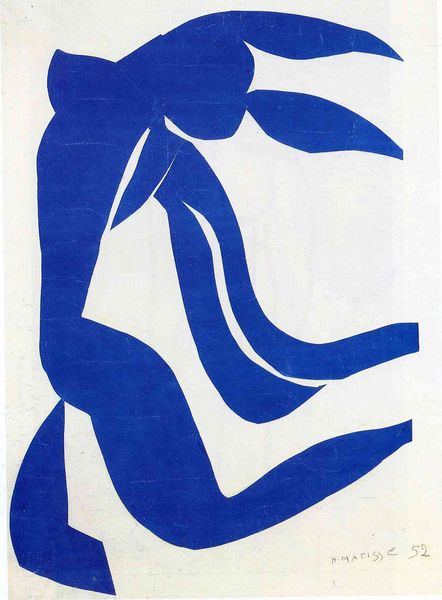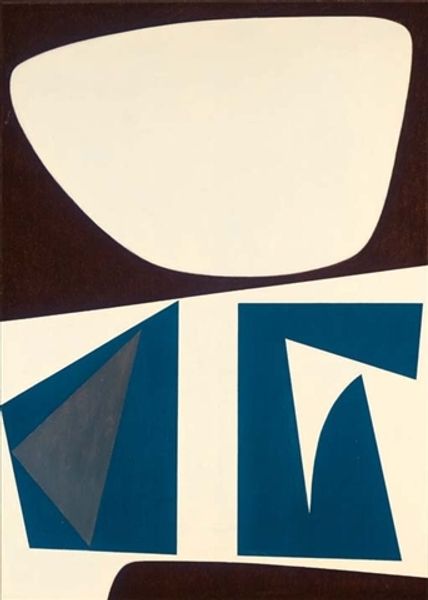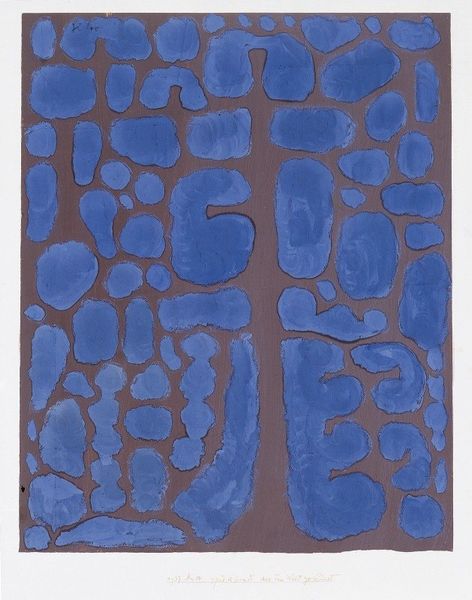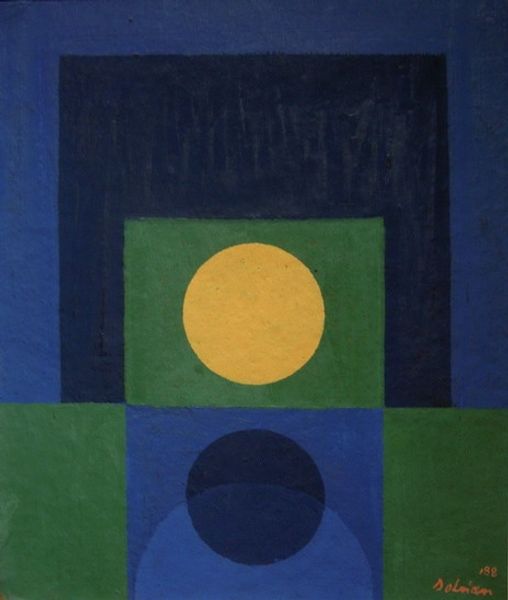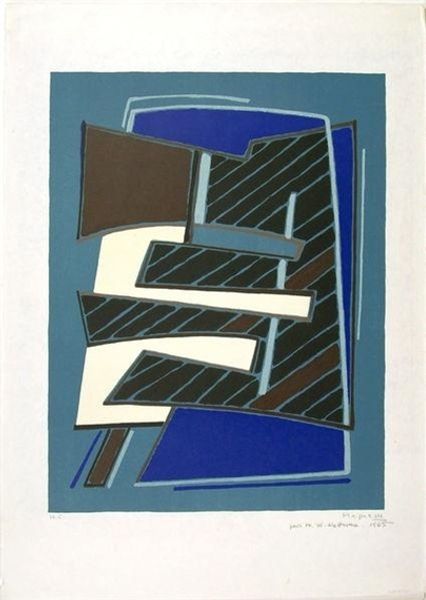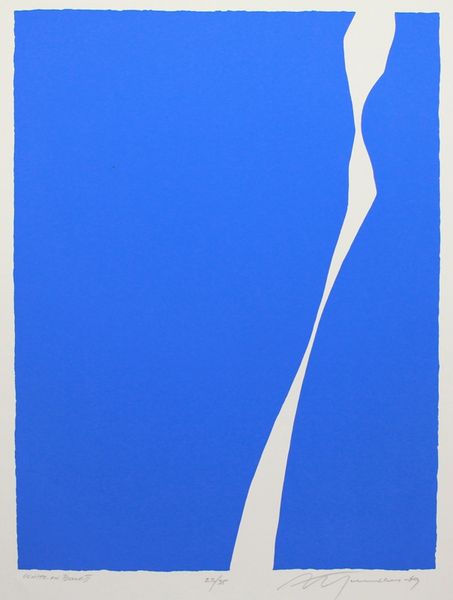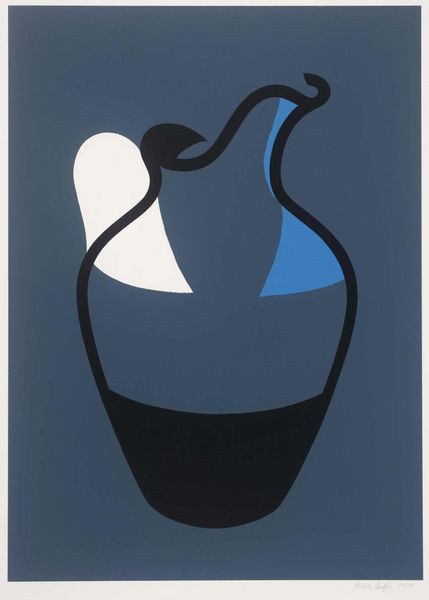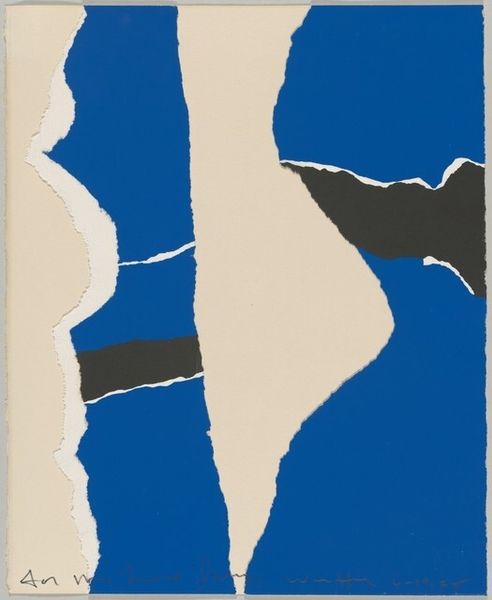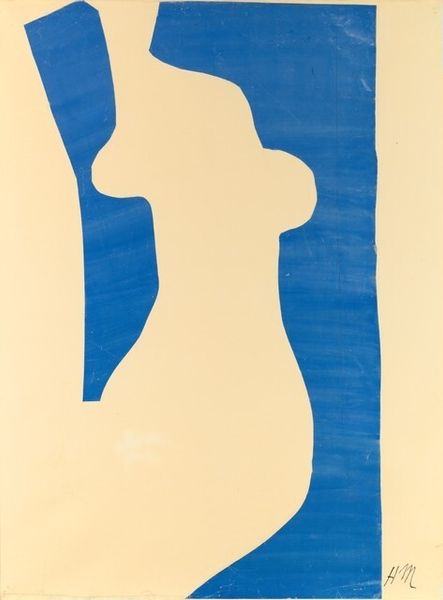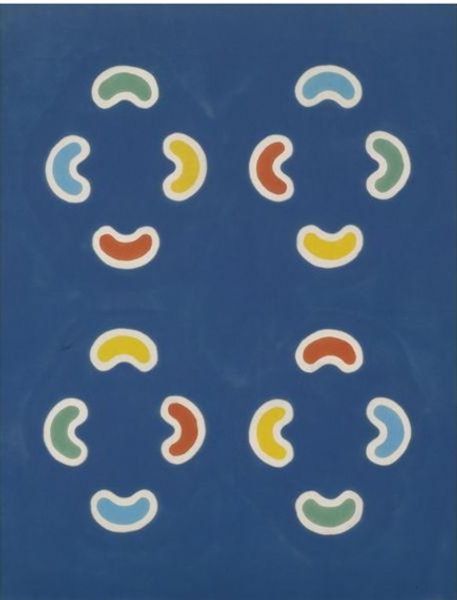
painting, oil-paint, acrylic-paint
#
op-art
#
painting
#
oil-paint
#
op art
#
acrylic-paint
#
organic pattern
#
geometric
#
geometric-abstraction
#
abstraction
#
modernism
Dimensions: 48 x 40 cm
Copyright: Victor Vasarely,Fair Use
Curator: Victor Vasarely’s “Mar Caribe,” painted in 1950, immediately strikes me with its vibrant blue contrasting with these bulbous brown shapes. Editor: It evokes such a strange sense of tranquility, despite its somewhat unnatural geometry. The interaction of form and color creates an almost meditative visual experience. Curator: It’s interesting that you find it tranquil. To me, the juxtaposition of these simple, earthy shapes with such a synthetic, flat blue speaks volumes about the socio-economic context of the time. It seems to symbolize industrialization encroaching on the natural world, with the artist’s conscious and laborious choices in color and form heightening this commentary. Editor: While I acknowledge the potential symbolic reading of industrialization you propose, I am more inclined to appreciate the formal relationships within the painting itself. Look at the repetition and variation of rounded forms, how the artist manipulates positive and negative space, guiding your gaze, creating a dynamic rhythm despite the static subject matter. It’s a masterclass in visual organization. Curator: Precisely! And that organization isn’t merely aesthetic. By choosing simplified, almost manufactured shapes, Vasarely references the increasingly mechanized world around him. We must remember this was post-war Europe; factories were churning out new materials, new ways of life. The use of oil paint here is fascinating. On the one hand, the brushwork is minimal almost as if mocking mechanization through human replication, and, on the other, this choice embeds and confirms human agency behind this art as labor. Editor: A pertinent observation; however, I'm drawn back to the composition. How the arrangement generates a palpable sense of depth and movement through subtle tonal modulations and edge definition. Vasarely compels us to consider not simply *what* is depicted, but *how* it's depicted. How does the formal structure facilitate meaning? Curator: In that respect, wouldn’t you agree that the "how" is inextricable from the material conditions of its making? The production of art has shifted in the post-war context in complex relationships between labor, tech, and individual agency. Editor: It seems, then, that whether we view "Mar Caribe" through the lens of its historical context or its formal structure, its visual power persists and encourages extended examination. Curator: Yes, an insight to the value of contextual and art-historical perspectives into artworks of the era.
Comments
No comments
Be the first to comment and join the conversation on the ultimate creative platform.
